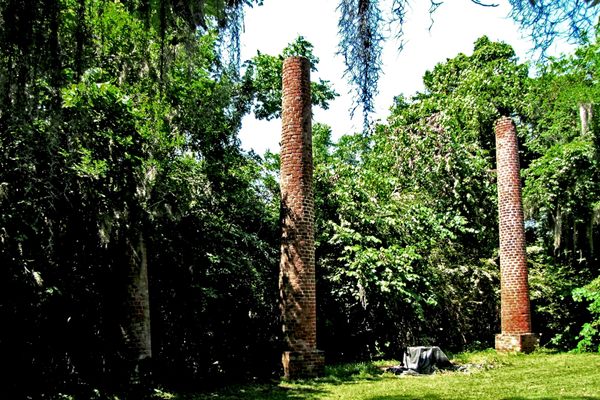A Flooded Mexican Ghost Town Offers Refuge to Border Crossers
 The ghost town of Guerrero Viejo, Mexico (all photographs by the author)
The ghost town of Guerrero Viejo, Mexico (all photographs by the author)
The ruins of Guerrero Viejo perch precariously on the shores of Falcon Reservoir on the Mexico side of the Texas-Mexico border.
In 1953, the residents of this 250-year-old town were forcibly displaced when the United States and Mexico agreed to build a dam on the Rio Grande river in order to supply water to southern Texas and northern Mexico. As the waters rose, most of the city’s residents were relocated to Nuevo Guerrero, some 10 kilometers away.
But not everybody left. As Guerrero Viejo became a ghost town, some residents insisted on staying in the only homes they had ever known, despite being cut off from essential services. They lived in the abandoned town, unwilling to leave the only streets they had known, and the cemetery where their loved ones were buried. (In 1997, the Mexican author Elena Poniatowska chronicled the memories and daily life of the town’s few remaining residents for her brooding, melancholic book Guerrero Viejo.)
 By the time I visited in 2004, none of the original inhabitants were still there. Thanks to a long drought, the floodwaters had receded and the town had reemerged as a rough outline of its former self. Cacti sprouted from rooftops, trees grew out of doorways, rubble colonized roads.
By the time I visited in 2004, none of the original inhabitants were still there. Thanks to a long drought, the floodwaters had receded and the town had reemerged as a rough outline of its former self. Cacti sprouted from rooftops, trees grew out of doorways, rubble colonized roads.
A ghost town in more than one sense, Guerrero Viejo had also become also a place of transit, or perhaps, residence, for people who could not be seen. Although it lacks basic infrastructure, its proximity to the US (just across the lake) and shelter (however tenuous) from the elements made it an attractive option for some planning a route across the border. During my visit I saw makeshift altars with fake flowers, as well as abandoned water bottles and clothing. In recent years, Guerrero Viejo has also become a haven for violent drug gangs, who in 2010 killed an American visiting the ruins on jet skis.
In the early 2000s, a group of determined preservationists took on the daunting task of raising funds to restore the town. They partially restored the church — Iglesia Nuestra Señora del Refugio — despite its having been submerged in Falcon Reservoir for nearly 50 years. Although much of the church’s interior had been restored, the rest of the town was clearly giving way to its inevitable fate.
In the past few years, Guerrero Viejo has again begun its tug-of-war with nature as the waters have returned, consuming part of the church. And yet, I understand the compulsion to defy the laws of nature and dedicate so much energy to rehabilitating a town doomed to drown, over and over again. Guerrero Viejo is not one of the wonders of the world. It’s a small town in a part of the world that’s usually ignored, and that was once flooded because it was in the way of a dam. The fact that it was being so carefully rebuilt was a different kind of triumph: of a small group of people who cared enough about the town’s importance to their collective memory to take it back.
I don’t know what Guerrero Viejo looks like today, but I hope one building in particular is still standing — the one where, on a ceiling beam almost 140 years ago, someone carefully etched the phrase “Viva la Republica Mejicana C. Guerrero Viejo Julio 2 de 1875.”












All photographs by the author.
















Follow us on Twitter to get the latest on the world's hidden wonders.
Like us on Facebook to get the latest on the world's hidden wonders.
Follow us on Twitter Like us on Facebook